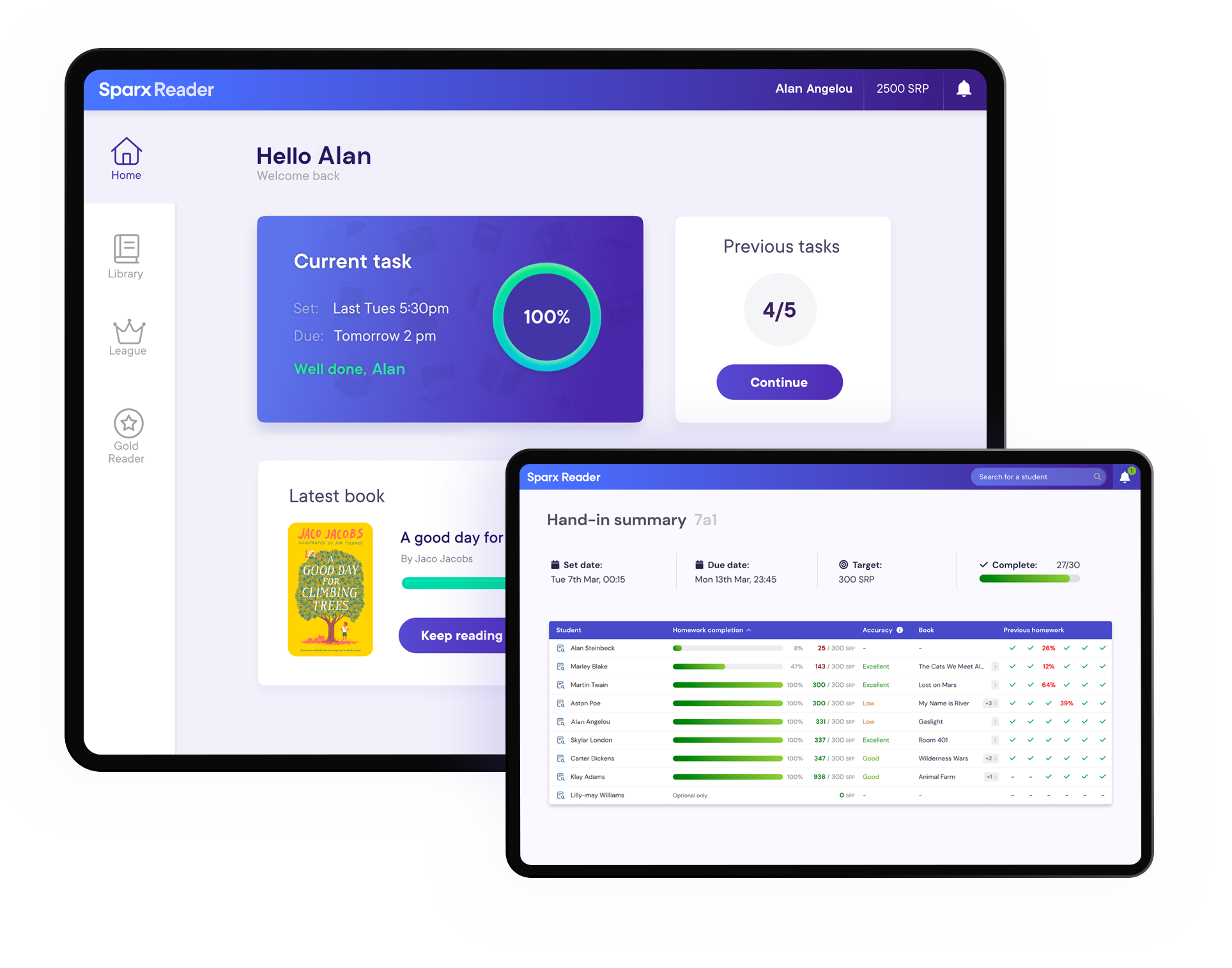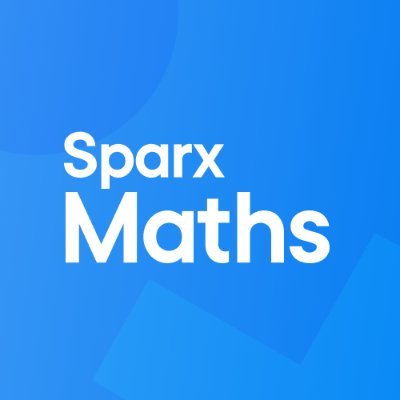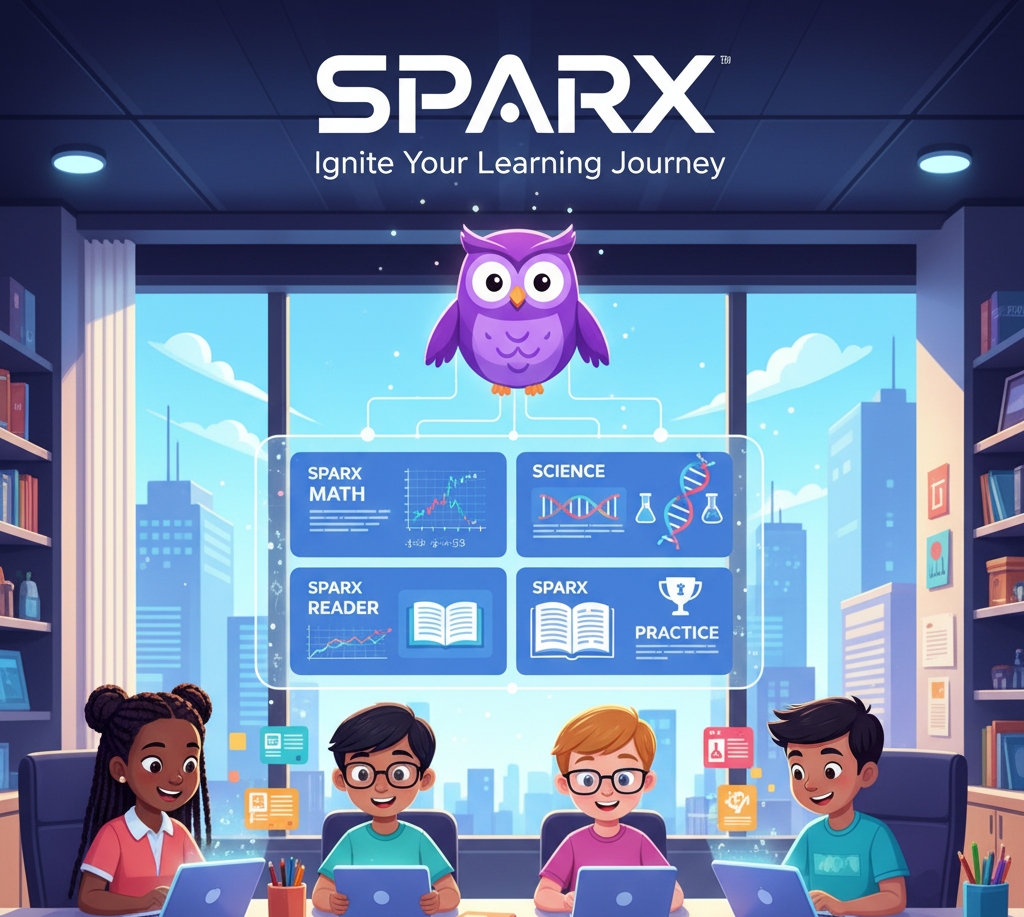Welcome to Sparx Reader, the ultimate guide for students, teachers, and parents looking to understand everything about this online reading platform. Whether you are searching for Sparx Reader login, tips on how to use it effectively, or want to read genuine Sparx Reader reviews, you are in the right place.
What is Sparx Reader?
Sparx Reader (sometimes written as sparx.reader, sparx reader. com, or even sparxe reader) is a digital reading platform designed to help students improve their reading skills, comprehension, and vocabulary. Schools across the UK and beyond use it as part of their English and reading programs. Students can log in via Sparx Reader student login or access through their school account. Parents and teachers also have separate login portals such as Sparx Reader teacher login and Sparx Reader parent login.
The system tracks progress through SRP points (Sparx Reader Points), making reading more engaging with challenges, quizzes, and certificates.
How Does Sparx Reader Work?
Once a student completes the log in, they can select books from the Sparx Reader library. After reading, they answer comprehension questions to earn SRP. The more accurate answers they give, the more Sparx Reader points they collect.
Students often ask:
-
How to do Sparx Reader fast?
-
How to complete Sparx Reader quickly?
-
How to get more SRP in Sparx Reader?
-
How to see your reading age on Sparx Reader?
The key is consistency—reading regularly, understanding the story, and answering honestly. Some even aim for the Gold Reader Sparx Reader pass, which rewards students who achieve high levels of reading performance.
Sparx Reader Login Guide
To access the platform, simply visit www.sparx reader.com or app.sparx reader. From there:
-
Select your school in the Reader select school option.
-
Enter your Sparx Reader login student password.
-
Teachers and parents can log in via Sparx Reader teacher login or Sparx Reader parent portal.
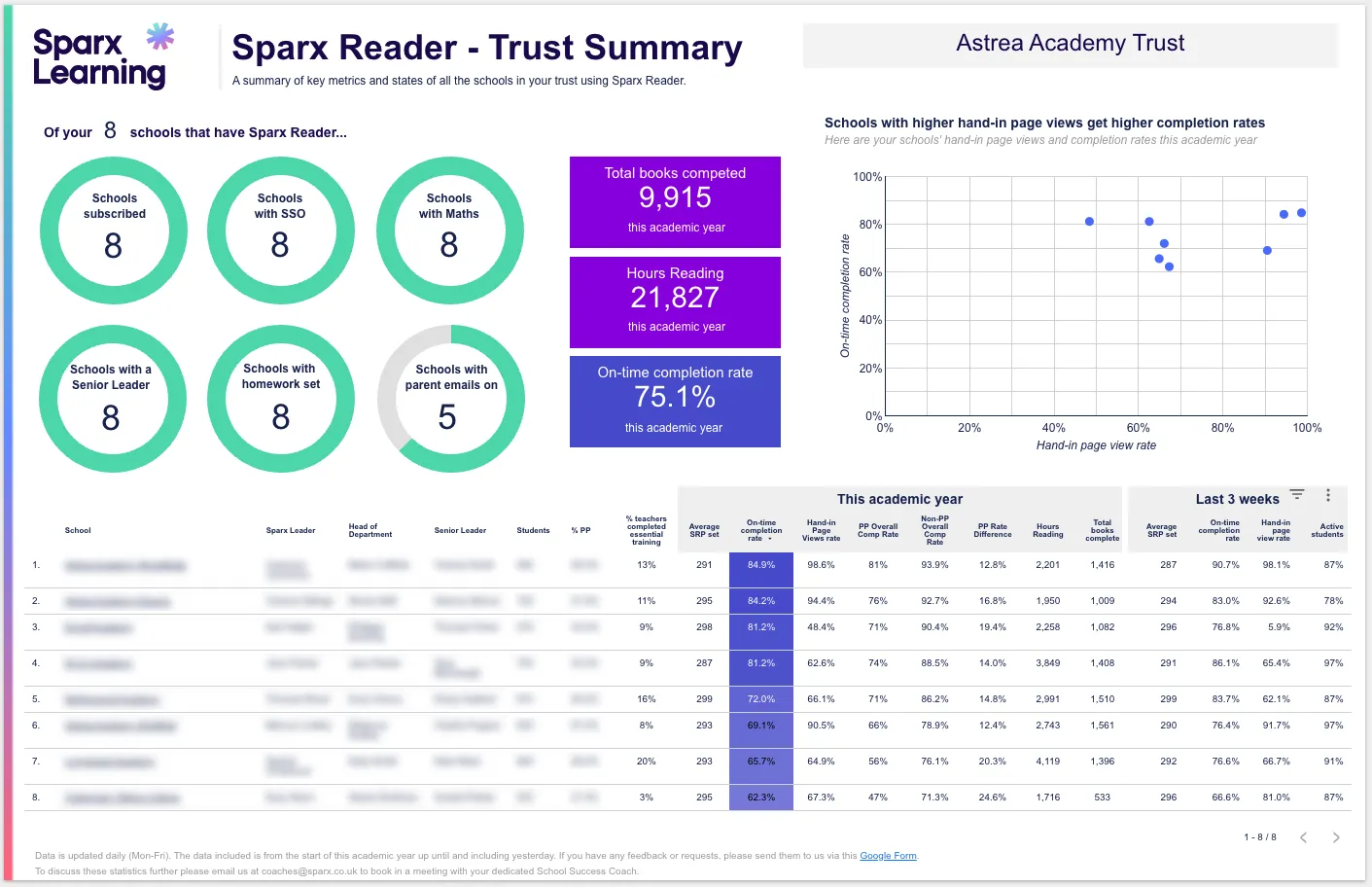
If you face issues like forgotten passwords or difficulty logging in, the school administrator usually provides assistance.
Popular Books on Sparx Reader
Some of the most searched titles include:
-
The Jungle Book Sparx Reader answers
-
Sherlock Holmes: A Scandal in Bohemia Sparx Reader answers
-
Sherlock Holmes: A Case of Identity Sparx Reader answers
-
Aurora Rising Sparx Reader answers
-
A Christmas Carol Sparx Reader answers
Students often look for Sparx Reader answers PDF, Sparx Reader answers today, or even shortcuts like Sparx Reader solver and Sparx Reader auto answer.
Sparx Reader Cheats & Hacks – The Truth
Many students search for things like Sparx Reader cheats, Sparx Reader hack, Sparx Reader auto bot, or Sparx Reader cheats GitHub. Others ask “How to cheat on Sparx Reader?” or “Is there an AI for Sparx Reader?”
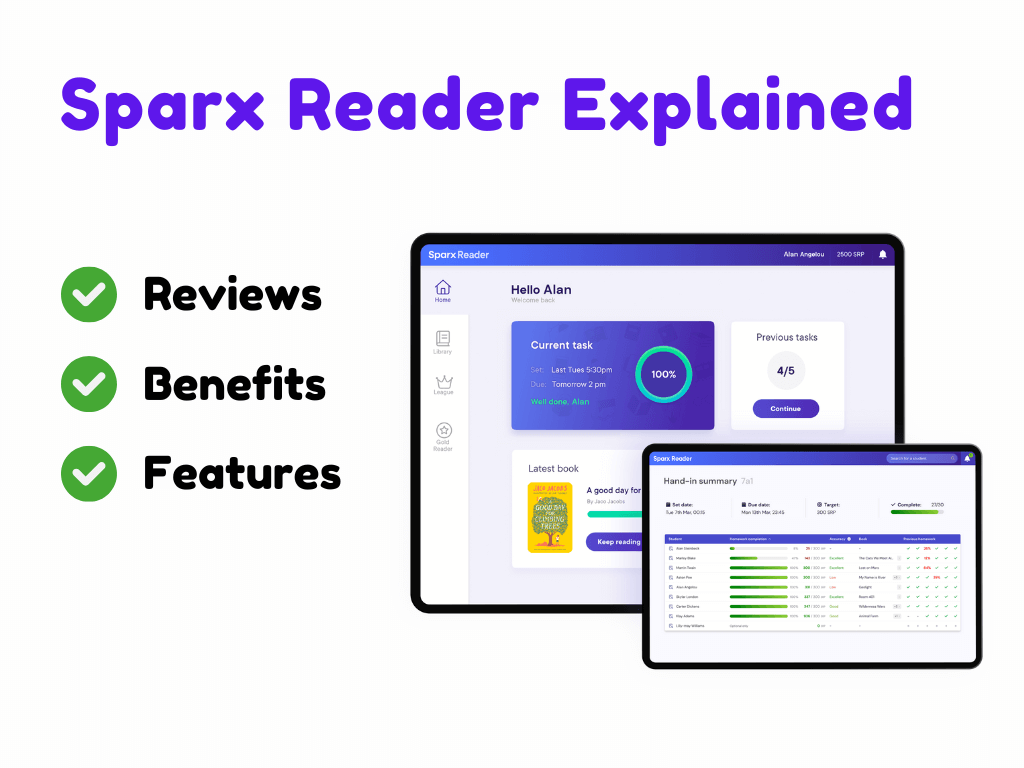
While you may see terms like Sparx Reader extension, Sparx Reader glitch, Sparx Reader auto complete, or Sparx Reader cheat app, it’s important to understand that using hacks or bots can affect your genuine progress. The best way to get Sparx Reader 100 percent completion is through practice and effort.
Sparx Reader Gold Reader Pass
One of the most popular achievements is the Gold Reader Sparx Reader award. Students often ask:
-
What is a Gold Reader pass in Sparx Reader?
-
How to get Gold Reader on Sparx Reader?
-
How does Sparx Gold Reader work?
The Gold Reader level shows consistency, dedication, and advanced comprehension skills. It’s highly valued by schools and teachers.
Sparx Reader for Teachers and Parents
Sparx offers more than just a student tool. With Sparx Reader parent login and Sparx Reader teacher login, families and schools can track reading progress, assign books, and monitor Sparx Reader levels. Parents can view their child’s achievements via the Sparx Reader parent portal, while teachers can use the platform for homework and assessments.
Reviews & Opinions on Sparx Reader
Is Sparx Reader good or not? Opinions vary. Some students say it’s motivating and helps them read more, while others complain, “I hate Sparx Reader” or “Why is Sparx Reader so hard?” On platforms like Trustpilot, you can find Sparx Reader reviews that discuss both positives and negatives.
What Parents Really Think About Their Child’s Online Reading Program
When schools introduce new digital platforms for reading, parents often have mixed feelings. On the one hand, it’s reassuring to know that children are spending time on something educational instead of scrolling endlessly on social media. On the other, the shift to structured online tasks can sometimes feel like a burden for families already juggling homework, after-school activities, and everyday routines.
Many parents say they appreciate how these platforms encourage consistent reading habits. Instead of relying on traditional book reports or irregular library visits, children now follow a guided path. The built-in quizzes and progress tracking give parents a clearer picture of how well their child understands the material, not just whether they’ve finished a book. For families who have struggled to motivate reluctant readers, this system can be a real game-changer.
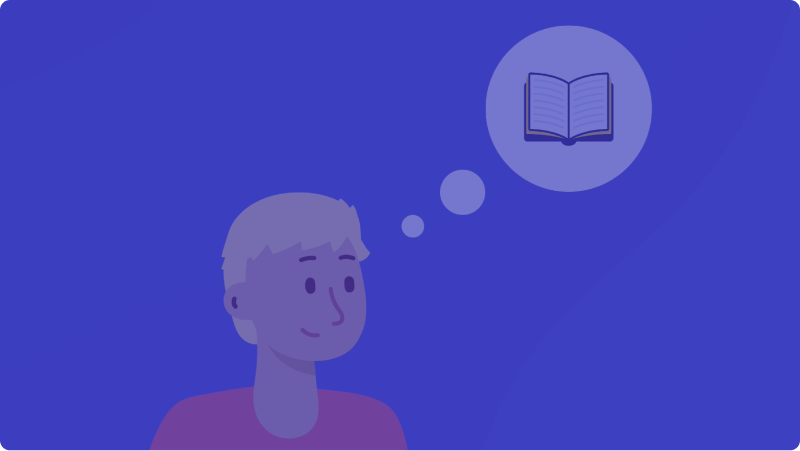
That said, not all feedback is positive. Some parents feel the program puts too much pressure on children to earn points or badges, which can take the joy out of reading. Instead of curling up with a story for fun, kids may approach it as just another assignment to complete. Others mention that the selection of books doesn’t always align with their child’s interests, leading to frustration and resistance.
There are also concerns about screen time. Parents who prefer their children to read physical books sometimes worry that logging in to complete tasks online is just another way of keeping them glued to a device. For families already trying to limit tablets and laptops, this adds to the challenge.
Still, many parents see the bigger picture. They recognize that the platform isn’t meant to replace bedtime stories or leisurely weekend reading but to supplement them. Teachers often highlight how these tools build comprehension skills, vocabulary, and confidence. When children start to see their own progress reflected back to them—through levels, certificates, or recognition at school—it can spark a sense of achievement that parents find encouraging.
In the end, most families agree that, like any educational tool, the results depend on balance. Used alongside traditional reading, it can be an effective motivator and a way to track improvement. But parents also emphasize the importance of keeping the joy of storytelling alive—whether that’s through reading aloud together, visiting local libraries, or letting children pick books that truly capture their imagination.
Frequently Asked Questions
Who made Sparx Reader?
It was created by the same team behind Sparx Maths and Reader in the UK.
When was Sparx Reader created?
It was launched as an educational reading tool in recent years.
Does Sparx Reader cost money?
Students usually access it through their school, so it’s included in school subscriptions.
Can you cheat on Sparx Reader?
Many search for Sparx Reader cheats, but the official advice is to read and answer honestly for true progress.
What is the rarest name in Sparx Reader?
Each school customizes its database, so it varies.
How to cheat Sparx Reader?
Many students search for Sparx Reader cheats, but there isn’t a genuine shortcut that gives you free answers. Tools like “Sparx Reader auto bot” or hacks may appear online, but they risk your account and defeat the purpose of reading. The best way is to read carefully, understand the story, and build SRP naturally.
How to cheat on Sparx Reader?
There’s no official method to cheat on Sparx Reader. Students sometimes look for extensions or scripts, but schools discourage this. To succeed, stay consistent with reading and aim for honest completion.
How to cheat in Sparx Reader?
The safest way to “cheat” is actually to practice better reading strategies: skim, take notes, and answer confidently. Real hacks or bots don’t guarantee accuracy.
How to do Sparx Reader fast?
To complete books quickly, read a little every day instead of cramming. Focus on understanding the key events in the book so answering questions becomes faster.
How to get more SRP in Sparx Reader?
You earn Sparx Reader Points (SRP) by answering questions correctly after reading. To get more SRP, pick books you enjoy and concentrate on accuracy rather than rushing.
How to get Gold Reader on Sparx?
The Gold Reader pass is awarded to students who consistently perform well. To achieve it, read regularly, score highly on comprehension, and avoid skipping questions.
What is Sparx Reader?
Sparx Reader is a digital reading platform used by schools, mainly in the UK, to help students improve comprehension and vocabulary through structured reading tasks.
How to get Gold Reader on Sparx Reader?
Gold Reader is the highest achievement. Students can get it by completing multiple books with strong comprehension scores and accuracy.
Why is Sparx Reader so bad?
Some students say “Sparx Reader is bad” because they find it strict, repetitive, or time-consuming. Others appreciate it for improving reading habits. Experiences vary by student.
How to complete Sparx Reader fast?
Choose shorter books, stay focused, and answer carefully. Avoid distractions and you’ll complete tasks much quicker.
How to do Sparx Reader quickly?
Make a schedule and stick to daily reading. Don’t rush the answers—accuracy leads to faster SRP accumulation over time.
How to get Sparx Reader to read to you?
Currently, Sparx Reader does not have a built-in “read aloud” option. However, some students use accessibility tools on devices to have the text narrated.
How to get SRP in Sparx Reader without reading?
There is no official way to get SRP without reading. Online hacks exist, but they can cost you progress and school trust.
How to swap a book on Sparx Reader?
You can swap a book by going into your reading library and selecting a new title, depending on your school’s settings.
Who made Sparx Reader?
It was created by the UK-based company Sparx, the same team behind Sparx Maths.
How to finish Sparx Reader quickly?
Focus on manageable books, stay consistent, and avoid skipping days. This makes it easier to finish your tasks faster.
How to get a lot of SRP in Sparx Reader?
Read regularly and aim for correct answers. Longer books and higher-level tasks can give more SRP.
How to get lots of SRP in Sparx Reader?
Consistency is key—build a reading habit and answer with accuracy.
How to get more points on Sparx Reader?
Sparx points are tied to your accuracy. The better your answers, the more points you get.
How to get more SRP on Sparx Reader?
By completing more books and answering all comprehension questions correctly.
How to get Sparx Reader answers?
Some websites claim to share Sparx Reader answers, but these are unreliable. Reading is the most effective way to succeed.
How to get Sparx Reader points fast?
Pick shorter books and focus on correct answers. This speeds up point collection.
How to get SRP fast in Sparx Reader?
Consistent reading + accuracy = faster SRP growth.
How to see your reading age on Sparx Reader?
You can check your reading age in your student account dashboard or ask your teacher for details.
What books are on Sparx Reader?
Popular books include The Jungle Book, Sherlock Holmes, A Christmas Carol, Aurora Rising, and many more classics and modern reads.
Who created Sparx Reader?
It was developed by Sparx Learning, a UK-based education company.
Who invented Sparx Reader?
The Sparx team, originally known for Sparx Maths, invented Sparx Reader as a companion program.
Does Gauth work on Sparx Reader?
Some students try using apps like Gauth, but it doesn’t always work well with Sparx Reader since answers require comprehension, not just math.
How does Sparx Gold Reader work?
Gold Reader is a recognition system for consistent, high-quality reading performance.
How does Sparx Reader work?
Students log in, select books, read, and answer questions to earn SRP. Teachers and parents can track progress.
How long does Sparx Reader take?
It depends on your reading speed and book length. On average, completing one book task can take from 30 minutes to a few hours.
How to check reading age on Sparx Reader?
Check your profile dashboard, or ask your teacher to confirm your reading age.
How to check your reading age on Sparx Reader?
Same as above—it’s usually available in your progress report.
How to copy paste on Sparx Reader?
Copy-pasting is restricted to prevent cheating.
How to get gold stars on Sparx Reader?
Gold stars are achieved by answering questions correctly and consistently.
How to get more Sparx Reader points?
Stay accurate in your answers and read more frequently.
How to get SRP in Sparx Reader?
Earn SRP by completing comprehension questions correctly.
How to get SRP in Sparx Reader fast?
Choose shorter, simpler books first to maximize speed and SRP collection.
How to make Sparx Reader easier?
Break reading into small chunks and pick books at your level.
How to make Sparx Reader read aloud?
You can use third-party text-to-speech tools on your device.
How to skip Sparx Reader?
Skipping is discouraged, but you can sometimes change books if your school allows it.
How to swap books on Sparx Reader?
Go to your library, select a new book, and confirm the swap.
How to use Cohere AI API key for Sparx Reader?
Some developers experiment with AI for Sparx Reader, but it’s not officially supported.
Is Sparx Reader good?
Many say it improves reading skills, while others find it repetitive. It depends on the learner.
What book gives the most SRP in Sparx Reader?
Longer books with more complex comprehension usually give higher SRP.
Why is Sparx Reader so hard?
It can feel hard because it tests comprehension in detail, not just reading speed.
Can you cheat on Sparx Reader?
Not reliably—most cheat methods don’t work long-term.
How to change your book on Sparx Reader?
Use the book swap option in your student dashboard.
How to cheat at Sparx Reader?
Shortcuts exist online, but they aren’t reliable. Reading is still the fastest way.
How to cheat Sparx Reader on iPhone?
Some students use scripts or apps, but they often fail and risk bans.
How to do Sparx Reader?
Log in, select a book, read it, and answer comprehension questions to earn SRP.
How to find your reading age on Sparx Reader?
Check your profile progress or ask your teacher.
How to get free SRP on Sparx Reader?
There is no official free SRP system—points must be earned.
How to get good books on Sparx Reader?
Browse the library or ask your teacher for recommendations.
How to get more points in Sparx Reader?
Answer with accuracy and stay consistent.
How to get more XP on Sparx Reader?
XP is linked to SRP—more correct answers mean more XP.
How to get stars on Sparx Reader?
By completing reading challenges correctly.
How to glitch Sparx Reader?
Students look for glitches, but they’re not dependable and often patched quickly.
How to hack Sparx Reader?
Hacks exist online, but they risk your account and progress.
How to use Gold Reader on Sparx Reader?
Gold Reader status is applied automatically when you achieve it.
Is there a way to cheat Sparx Reader?
Not reliably—focus on reading for genuine progress.
What is a Gold Reader pass in Sparx Reader?
It’s a recognition badge for students who reach top reading levels.
What is Sparx Gold Reader?
A special award that shows consistent high-level reading achievement.
What is the rarest name in Sparx Reader?
It depends on the school’s database of student names.
When was Sparx Reader created?
Sparx Reader was developed in the 2010s as part of the Sparx Learning initiative.
Student Success Stories
One of the strongest indicators of how well a learning platform works is the feedback and results from the students who use it. Over the past few years, many young readers have shared their experiences of how digital reading programs have shaped their confidence, skills, and overall attitude toward books.
Take, for example, a Year 7 student who admitted that before using the program, she rarely finished a book. She would often start with enthusiasm but lose interest halfway through. With the structured reading challenges and progress milestones, she began to see her own growth. What once felt like a chore slowly turned into a routine she was proud of. By the end of the school year, she had completed more titles than in the previous three years combined.
Another case comes from a student in Year 9 who struggled with comprehension. He could read words fluently but often missed the deeper meaning of passages. With the built-in quizzes and instant feedback, he began to notice patterns in the mistakes he was making. Over time, his scores improved, and his teacher observed that he was able to participate more confidently in classroom discussions. His parents even noticed that he started picking up books at home without being asked.
There are also stories of reluctant readers who found unexpected joy in competition. For some students, the points, badges, and recognition systems were motivating enough to push them to read consistently. One student described the thrill of moving up levels as “like playing a video game, but with books.” While parents were initially skeptical, they soon realized that the gamified system encouraged reading far more effectively than constant reminders or rewards at home.
Teachers, too, often share how rewarding it is to witness these changes. A teacher in a secondary school mentioned a particular student who used to avoid reading tasks altogether. After several months with the program, the student not only caught up to grade level but also volunteered to help classmates who were struggling.
What these stories highlight is that progress doesn’t happen overnight—it builds gradually through small wins. For some, it’s about finishing their very first book cover to cover. For others, it’s finally feeling confident enough to discuss a novel in front of the class. And for many, it’s realizing that reading can be enjoyable rather than something to “get through.”
In the end, these success stories show that when used consistently and supported by teachers and parents, digital reading platforms can make a real difference in a student’s journey. They transform reluctant readers into confident learners and give children a sense of achievement that carries beyond the classroom.
Comparison with Other Reading Tools
When it comes to digital literacy platforms, there isn’t just one option available. Over the years, schools have experimented with a range of systems designed to boost comprehension, vocabulary, and independent reading habits. Each program has its strengths and weaknesses, and parents often find it helpful to understand how they compare.
One widely used alternative is Accelerated Reader (AR). This tool has been around for decades and remains popular in many schools across the UK and US. Students take comprehension quizzes after finishing a book, and points are awarded based on accuracy and book level. While AR provides teachers with detailed reports, some parents feel it can be overly rigid, as it tends to push children toward specific levels rather than letting them freely explore different types of literature.
Another option is ReadTheory, which focuses less on full books and more on short passages followed by comprehension questions. It’s ideal for quick practice, particularly for children preparing for exams that require critical reading skills. However, many parents note that while it’s effective for testing comprehension, it doesn’t cultivate the same long-term love for reading because it lacks the immersive experience of completing a novel.
Epic Books, sometimes described as the “Netflix for kids’ reading,” is another platform that’s gained popularity. Unlike the structured quiz-based systems, Epic offers a wide library of digital books, comics, and audiobooks that children can explore at their own pace. The strength here lies in variety—students can find everything from graphic novels to science texts. On the downside, without built-in accountability systems, some children might scroll through without truly engaging with the material.
Lexia Core5 is another literacy program, designed with younger readers in mind. It takes a more phonics-heavy approach, breaking down words into sounds and patterns to support early learning. Parents of primary-aged children often appreciate its structured nature, though older students may find it repetitive.
Compared to these, modern reading platforms that combine gamification with structured comprehension checks tend to strike a balance. They not only encourage consistent practice through rewards and levels but also ensure that students are genuinely processing what they read. For teachers, the appeal lies in detailed progress tracking, while for parents, it’s the reassurance that their child isn’t just “clicking through” but actively learning.
Of course, no single system is perfect. Some are better for sparking a love of books, while others are designed for measurable progress in comprehension skills. Ultimately, the best approach often involves blending digital platforms with traditional reading at home—balancing accountability with freedom to explore.
Parents’ Perspectives
While teachers see the academic progress firsthand, it’s often parents who notice the everyday changes at home. Their observations provide some of the most valuable insights into how effective digital reading platforms truly are.
Many parents admit they were skeptical at first. Some worried that turning reading into a screen-based activity would only add to their child’s daily screen time. Others felt that the gamified approach—points, badges, or star ratings—might make the focus too much about rewards rather than genuine learning. But over time, many families began to notice subtle shifts in their child’s reading habits.
For instance, one parent shared that her son, who previously avoided books altogether, began asking if he could log in to complete his daily reading tasks before dinner. She described it as “a small miracle,” given how often she used to argue with him about homework. Another parent mentioned that her daughter’s vocabulary had noticeably expanded, and she had become more confident when reading aloud to grandparents.
Of course, not every parent’s experience has been entirely positive. Some raise concerns that the structured format can feel repetitive. Children who are already advanced readers might find the tasks too simple, while those who struggle may feel pressured by the constant push to keep up with milestones. In such cases, parents often emphasize the importance of balance—using the platform as a supplement rather than the sole method of reading practice.
Another frequent observation is the shift in motivation. A parent of a Year 8 student explained, “At first, my child was reading just for the points. But after a few months, she started enjoying the books themselves. Now she talks about characters and stories, not just scores.” This transformation from extrinsic to intrinsic motivation is something many parents highlight as the most valuable outcome.
There are also practical benefits. Parents with busy schedules appreciate that they can track their child’s progress without constantly nagging. Weekly reports and visual dashboards give them a sense of how much their child is engaging, which helps in conversations with teachers during parent evenings.
At the same time, some families worry about accessibility. Not every child has reliable internet or a personal device at home, which can create a gap between students who can practice consistently and those who cannot. Parents in this situation often call for schools to provide more flexibility, such as lending devices or giving offline options.
Overall, parents’ perspectives tend to converge on a central idea: when used thoughtfully and in moderation, digital reading platforms can be powerful tools. They may not replace traditional books or shared family reading time, but they can build consistency, accountability, and confidence in children who might otherwise struggle.
Teachers’ Perspectives
In the classroom, teachers are often the first to see how digital reading tools impact learning on a day-to-day basis. Their feedback tends to be both practical and candid, shaped by the realities of managing large groups of students with varying abilities.
One of the most common benefits teachers highlight is accountability. Traditional independent reading assignments sometimes left educators wondering if students were truly engaging with the material. With digital platforms, however, progress is automatically tracked. Teachers can see how much a student has read, whether they’ve understood the text, and where they might be struggling. This data-driven insight helps teachers identify students who need extra support and those who might be ready for more challenging material.
Many teachers also appreciate the way these systems standardize practice. Every student, regardless of their reading level, follows a structured routine that encourages daily engagement. A Year 6 teacher explained, “It takes the guesswork out of monitoring independent reading. I don’t have to chase after half-read books—I can see exactly what’s happening.”
That said, teachers are quick to point out the limitations as well. While the gamified rewards system motivates many children, some educators worry it shifts focus away from the joy of reading itself. “When students only want to read for the points,” one secondary school teacher noted, “we risk creating a culture where books are seen as tasks rather than adventures.” This tension between motivation and meaning is a recurring theme in teacher feedback.
Another challenge lies in differentiation. Not all students progress at the same pace, and while the platforms often claim to adapt to individual abilities, teachers sometimes find that struggling readers still feel overwhelmed. For advanced students, the system may not provide enough depth or critical analysis, leaving them under-stimulated. Teachers often supplement with classroom discussions, book clubs, or projects to make sure reading doesn’t become a one-size-fits-all exercise.
Despite these concerns, many teachers agree that digital reading tools are especially valuable in helping reluctant readers build consistency. For students who might never pick up a book voluntarily, the structure, immediate feedback, and visible progress provide the push they need. Over time, teachers report that some of these students transition from “reading because they have to” into “reading because they want to.”
Ultimately, most educators view these platforms not as replacements for traditional reading methods but as complements. Shared reading sessions, group storytelling, and independent choice reading still play an essential role in developing lifelong readers. The digital component simply adds an extra layer of support—particularly when it comes to measurable progress and accountability.
Student Perspectives
While teachers and parents provide structure and encouragement, students are the ones actually living the experience. Their views are often the most revealing—sometimes enthusiastic, sometimes critical, and always shaped by how the platform fits into their daily lives.
For many students, the gamified rewards are a major motivator. Points, stars, and progress charts create a sense of achievement that makes reading feel less like homework and more like a challenge to beat. A Year 7 student explained, “I like seeing my score go up. It feels like leveling up in a game.” This sense of progress can be particularly powerful for students who previously found reading boring or intimidating.
Others, however, are more skeptical. Some argue that the system feels too repetitive, with tasks that don’t always match their interests. A Year 9 student put it bluntly: “I just want to read what I like. Sometimes the books feel chosen for me, not by me.” This tension between structured reading and personal choice is one of the biggest divides in student feedback.
There are also students who notice the long-term benefits even if they don’t enjoy the process. A Year 10 learner said, “I don’t always like the books, but my reading age has gone up, and I can see I’m better at writing essays.” For these students, the platform becomes less about enjoyment in the moment and more about skills they can use in schoolwork and beyond.
Interestingly, some of the strongest feedback comes from reluctant readers—those who struggled most before. A Year 8 student who had never finished a book before shared, “At first, I hated it. But then I started getting into some of the stories, and now I read more outside of school too.” Stories like this highlight how a structured system, even if not always loved, can spark lasting changes in habits.
Of course, not all experiences are positive. Students sometimes complain about time pressure or about the difficulty of keeping up when they fall behind. Others dislike the idea of being constantly tracked, feeling as though the system is watching their every move. For these learners, reading risks becoming another stressful school task rather than a source of relaxation or curiosity.
Overall, students’ perspectives are mixed but insightful. Many appreciate the clear structure and rewards, while others long for more freedom and choice. What’s clear, however, is that the system leaves an impact: whether through improved skills, new habits, or strong opinions, it rarely goes unnoticed by the young people who use it every day.
Strengths and Weaknesses of the System
After hearing from parents, teachers, and students, a clear picture emerges: this digital reading platform has both impressive strengths and notable weaknesses. Understanding both sides is essential to see how it fits into modern education.
Strengths
-
Accountability and Progress Tracking
One of the platform’s biggest advantages is the way it makes reading measurable. Instead of relying on guesswork, teachers and parents can see exactly how much a student has read, how well they understood the text, and where extra support might be needed. -
Motivation Through Gamification
The system’s use of points, stars, and rewards provides a sense of achievement. For reluctant readers especially, these elements can make reading feel less like a chore and more like a challenge. -
Consistency and Structure
Regular, structured engagement helps students build a reading routine. Many parents note that their children are finally reading daily, while teachers appreciate that the platform encourages practice outside of class. -
Support for Reluctant Readers
Some of the most powerful stories come from students who never used to finish a book. With guided support and rewards, they gradually develop confidence and sometimes even a love of reading. -
Skill Development Beyond Reading
Several students report improvements in writing, comprehension, and overall academic performance, showing that the benefits can extend beyond the platform itself.
Weaknesses
-
Overemphasis on Rewards
While points and scores motivate some learners, others become focused only on “beating the system.” Teachers worry this shifts attention away from the joy of reading itself. -
Limited Choice and Engagement
Students often mention feeling restricted in their book options. When the material doesn’t match their interests, they disengage quickly—even if they continue reading for points. -
Pressure and Stress
For some learners, the constant tracking and deadlines create anxiety. Instead of developing a positive reading habit, they view the process as just another school assignment. -
Uneven Adaptability
Although the system is designed to adjust to different abilities, teachers note that struggling readers can still feel overwhelmed, while advanced readers sometimes feel under-challenged. -
Risk of Dependency
There is a concern that students may become reliant on external rewards rather than building intrinsic motivation. Without stars or scores, some may lose interest in reading altogether.
The Balance
Ultimately, the platform works best when used as a complement rather than a replacement. It provides structure, accountability, and motivation, but it can’t fully replace the joy of choosing a favorite book, discussing it in class, or discovering a story on one’s own. When balanced with traditional reading experiences, it can be a powerful tool for building skills and habits.
Future of Digital Reading Platforms
As schools and families continue to rely on technology, the role of digital reading platforms will only grow. The feedback from parents, teachers, and students makes it clear that while current systems provide structure and measurable progress, there is still plenty of room for innovation.
More Personalization
One of the most requested improvements is greater choice and flexibility. Instead of limiting students to preselected titles, future platforms could allow learners to explore a wider library that matches their interests while still tracking progress. This balance between structure and freedom could make reading feel less like a task and more like a personal journey.
Smarter Gamification
Points, stars, and rewards are powerful motivators, but over time they can lose their impact or even cause stress. The next generation of platforms might offer smarter gamification, where progress feels more like an adventure than a competition. For example, unlocking stories, customizing avatars, or earning creative achievements could make reading more engaging without the pressure of deadlines.
Integration with Everyday Learning
Future tools could be better linked with subjects beyond English. Imagine a history lesson where the reading platform offers age-appropriate articles, or a science class where students explore short stories about discoveries. By weaving reading into multiple subjects, platforms can support learning across the curriculum.
Accessibility and Inclusivity
Not all students learn in the same way. Enhanced read-aloud functions, adjustable text sizes, and multilingual options could make platforms more inclusive for learners with dyslexia, vision impairments, or those studying in a second language. This would ensure that no student feels left out.
Encouraging Lifelong Reading
Perhaps the greatest challenge is building intrinsic motivation. Future platforms should focus less on external rewards and more on fostering curiosity, creativity, and critical thinking. Features like student book clubs, discussion boards, or even integration with local libraries could help reading feel like part of life rather than just a school task.
Data That Empowers, Not Pressures
While progress tracking is valuable, future systems may move toward gentler, student-centered feedback rather than constant scoring. This could reduce stress while still giving teachers and parents the insights they need.
Digital reading platforms have already changed the way many young people approach books. If they continue to evolve in ways that prioritize choice, inclusivity, and genuine love of reading, they could become not just a school requirement, but a lifelong companion for learning.
Parent & Student Tips
Even the best-designed reading platforms can feel challenging at times. Parents and students often look for ways to make the process smoother, less stressful, and more enjoyable. Here are some practical strategies:
Tips for Parents
-
Balance Structure with Freedom
Encourage your child to complete assigned reading, but also set aside time for books of their own choice. This helps maintain the joy of discovery. -
Create a Reading Routine
Consistency matters more than long sessions. Ten to fifteen minutes a day at a regular time—before bed, after dinner, or on the way to school—can build strong habits. -
Talk About the Story
Instead of focusing only on points or progress, ask open-ended questions like “What part surprised you most?” or “Which character would you be friends with?” to spark deeper thinking. -
Celebrate Effort, Not Just Results
Whether your child earns rewards or not, praise their persistence and curiosity. This reinforces intrinsic motivation. -
Be a Role Model
Children are more likely to enjoy reading if they see their parents reading too. Pick up a book or magazine and share your own excitement about stories.
Tips for Students
-
Pick Books That Interest You
Whenever possible, choose stories you’re genuinely curious about. Adventure, mystery, sports, or comics—reading is easier when you enjoy the subject. -
Break It Into Small Goals
Don’t stress about finishing a whole book quickly. Try setting goals like “I’ll read two chapters today” or “I’ll read for ten minutes.” -
Make Reading Social
Talk to friends about what you’re reading or swap recommendations. Sometimes the best motivation is knowing you can share your thoughts with someone else. -
Use Short Breaks Wisely
Even five minutes in between activities can be enough to read a page or two. Little chunks add up fast. -
Don’t Be Afraid to Ask for Help
If a book feels too difficult, ask a teacher or parent to suggest an easier one. Reading should be challenging, but not discouraging.
Future Tech Features: The Next Generation of Digital Reading
Digital learning tools are no longer just about tracking pages read or assigning quizzes. The future promises an exciting wave of innovation that blends artificial intelligence, immersive technology, and personalized learning. Below are some forward-looking features that could transform how children, parents, and teachers experience reading in the years to come.
AI-Powered Personalization
Most reading apps today recommend books based on a child’s level or past choices, but the future could be far more sophisticated. Imagine an AI that understands a child’s reading speed, vocabulary growth, emotional preferences, and even attention span. Instead of suggesting a random book at the same level, the system could tailor recommendations like:
-
For a student who enjoys mysteries but struggles with long sentences → shorter, suspense-driven stories.
-
For a child who loves fantasy but needs vocabulary support → an age-appropriate adventure with built-in definitions.
This level of personalization could prevent students from feeling overwhelmed while also keeping them excited about new discoveries.
Integrated Audiobooks & Read-Aloud Options
Not all children learn best by staring at a page. Many benefit from hearing words spoken aloud, whether to support dyslexia, improve pronunciation, or simply engage multiple senses at once. In the near future, apps may provide seamless toggling between text and audio. For instance:
-
A student can read independently during the day.
-
Later, the app switches to an audiobook so they can continue the story during a car ride or bedtime.
-
Words could be highlighted in real time as the narration plays, reinforcing word recognition.
This approach combines accessibility with enjoyment, ensuring that every child—regardless of ability—can fully engage with stories.
Multilingual & Culturally Diverse Libraries
Currently, many platforms focus heavily on English-language titles. But as classrooms become more global, the demand for multilingual support will grow. Future systems may include:
-
Books available in multiple languages, letting bilingual children switch between them.
-
Stories rooted in diverse cultures so that every student sees themselves reflected in the material.
-
Cross-language learning modes, where reading in one language is paired with vocabulary explanations in another.
Such diversity doesn’t just expand knowledge; it also fosters empathy, inclusivity, and a deeper appreciation for different perspectives.
Gamification 2.0
Stars, points, and leaderboards are common today—but tomorrow’s systems could take gamification to a whole new level. Picture a platform where:
-
Completing a chapter unlocks a piece of a digital quest, like solving a mystery or building a virtual city.
-
Characters from books “visit” students inside the app as guides or companions.
-
Progress is linked with interactive puzzles or role-playing scenarios, keeping readers hooked without losing sight of literacy goals.
By merging storytelling with game design, reading could shift from a passive activity into an adventure that rewards persistence and curiosity.
Immersive Experiences with AR & VR
Perhaps the most exciting possibility lies in augmented reality (AR) and virtual reality (VR). Imagine a child putting on a VR headset and stepping directly into the world of their book:
-
Exploring ancient Egypt while reading a historical novel.
-
Watching a science fiction city come alive in 3D as they follow the story.
-
Using AR on a tablet to project a character into their bedroom, making the book feel interactive and alive.
This blending of physical and digital spaces could redefine how children connect with stories, making learning more experiential and unforgettable.
Advanced Progress Insights
For parents and teachers, future systems could provide far richer insights than today’s basic “time spent” or “pages completed.” Imagine dashboards that show:
-
Comprehension trends → Is the student understanding themes, characters, and moral lessons?
-
Vocabulary mastery → Which new words have been absorbed, and which need reinforcement?
-
Emotional engagement → Did the student linger on specific sections, indicating strong interest?
Such tools could allow for real-time intervention—supporting struggling readers quickly, while also challenging advanced ones with deeper material.
Community & Social Sharing
Reading is often seen as a solitary activity, but technology could make it more social in safe, productive ways:
-
Virtual Book Clubs: Students could join age-appropriate clubs to discuss stories.
-
Peer Recommendations: Children might share book reviews with classmates, just as they do with YouTube videos today.
-
Parent-Teacher Communities: Secure forums could allow parents and educators to exchange tips, track collective progress, and share resources.
By turning reading into a shared experience, digital tools can foster collaboration, discussion, and a sense of belonging.
Looking Ahead
The future of digital reading will likely be a blend of learning, entertainment, and personalization. Instead of forcing students through rigid programs, tomorrow’s tools may feel like personalized learning companions—adapting, encouraging, and even playing alongside the reader.
For parents, this means more visibility into their child’s growth. For teachers, it means smarter ways to support different learning styles. And for students, it could transform reading from a chore into an adventure.
The big question isn’t whether these features will come—but how soon they’ll become mainstream.
Final Thoughts
The journey through this digital reading platform shows a story of both promise and challenge. For many families, it has provided structure, accountability, and a way to measure progress that was hard to capture before. Teachers appreciate its ability to encourage daily reading habits and give insight into student strengths and struggles. Some students, too, have found confidence, discovering that reading can be rewarding when broken into manageable steps.
Whether you are here to find Sparx Reader login, tips on how to get SRP fast in Sparx Reader, details about the Gold Reader pass, or genuine Sparx Reader reviews, this page covers it all. Instead of relying on Sparx Reader hacks or Sparx Reader cheats, focus on reading, improving comprehension, and enjoying the books.
Sparx Reader remains one of the most widely used digital reading tools in schools, and whether you love it or dislike it, it continues to shape the way students engage with reading.
